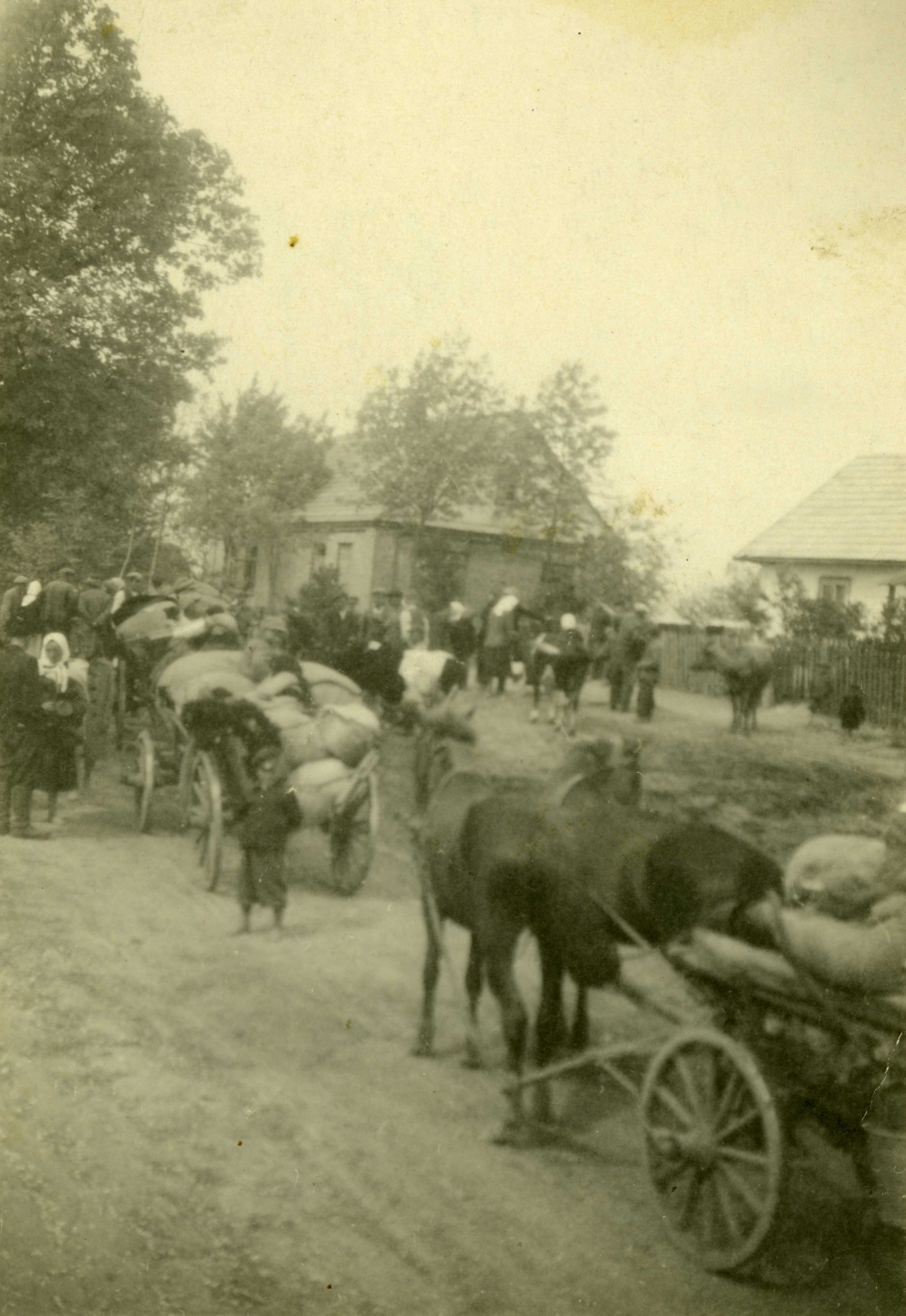General Plan East
The General Plan East or Generalplan Ost, or GPO for short, was born in the minds of German ideologues and top politicians for several months. Unfortunately, the original documents of this criminal idea have not survived to our time. Nevertheless, through additional sources, such as the testimonies of some of the German criminals who worked on the GPO, it can now be stated with firmness and historical certainty that the GPO was conceived between 1941 and 1942 by a special team of employees of the Reich Main Security Office. In addition, it was personally approved by Reischführer SS Heinrich Himmler.
The General Plan East was a settlement and Germanization plan to be implemented over a vast area of Central and Eastern Europe, stretching from Lake Ladoga in the north to the Black Sea in the south, and east of the Third Reich's pre-World War II border to the Ural Mountains. Its main objective was to shift the ethnic border of the German state by about a thousand kilometers eastward i.e. to gain "living space" - the notorious Lebensraum, for the millions of German settlers who were to settle and develop the land they received. As a result, through the execution of the GPO, the Germans aimed to create the so-called Greater German Reich, on which the so-called New Deal was to prevail. Under this notion was the domination of the Nazis throughout Europe, the extermination of the Jews and all Slavic peoples.
The latter were planned to be destroyed, of course, in German plans, in every possible way. And those who would survive this terrible repression were intended to be displaced beyond the Urals, where the eastern border of the "Greater Reich" was to be established.
In planning the General Plan East, the Germans assumed that thirty to fifty million citizens of various countries in Central and Eastern Europe would be annihilated or displaced over a period of twenty years. In the case of Poland, the Nazis estimated that this various types of oppression would succeed in destroying about 20 million citizens of the Second Republic, or eighty-five percent of the Polish population at the time. At the same time, they intended to move some ten million German colonists to the aforementioned areas.
The Germans began implementing the General Plan East first in those Polish lands that had been incorporated into the Third Reich in October 1939, that is, primarily Greater Poland and Pomerania. Nevertheless, in the subsequent years of the war, the Nazis decided to carry out their criminal plans also in other areas of the former Second Republic. Their choice fell, among others, on Zamojszczyzna, which led to a real nightmare that was realized on this small piece of Polish land.
The beginning of the tragedy
The Zamojszczyzna region seemed "appealing" to the Germans for several key reasons. First of all, it was an extremely attractive area from an agrarian point of view. In addition, it lay along a transportation route. Most important, however, was the fact that by the end of the 18th century a total of several thousand Germans had settled in the area, whose descendants still lived there, although it is difficult to determine their national sympathies. For this reason, Zamojszczyzna was referred to by the Nazis as a "bastion of Germanness," which had to be colonized first.
However, before proceeding with the GPO, the Germans decided to hit the Polish Jews first. The decision to exterminate this nation was made at the end of 1941, and at the beginning of the following year it was rearranged for dozens of high officials of the Third Reich at a special conference at Wannsee to coordinate the actions of various institutions. During that meeting, Joseph Bühler, i.e. the representative of Governor General Hans Frank, stated that the entire operation of the so-called "final solution of the Jewish question" should begin precisely from the area they administered.
The idea was favored by Himmler, who appointed Odilo Globocnik, head of the SS and Police in the Lublin District, as the executor of the operation. This in turn prepared the groundwork for Operation "Reinhardt," the extermination of all Jews residing in the General Government.
This one began exactly on the night of March 16-17, 1942, with the liquidation of the Lublin ghetto. Subsequently, in the following months, other ghettos were systematically destroyed and their inhabitants were transported to German camps in Belzec, Sobiobor, Treblinka and Majdanek, where they were subjected to extermination in gas chambers. Over the course of eighteen months, German criminals murdered a total of about two million Jews from the entire General Government, including Zamojszczyzna and also from other European countries, such as Czechoslovakia, France, the Netherlands, among others.
After these events, the Germans focused on implementing their colonization intentions. Significantly, however, the first decisions on the aforementioned matter were made as early as July 1941. It was then that Himmler decided to establish a German Settlement District in the Zamojszczyzna area. Then, in November 1941, the first trial evictions were organized. At that time, some two thousand Poles were expelled from their homes in six villages. In their place were brought in people of German descent, who by then were living in Bessarabia. This action was called "Heim ins Reich" by the Nazis, which translates to "Return home to the Reich." As part of the same operation, volksdeutchy from Estonia and Latvia, Northern Bukovina or those parts of the Soviet Union occupied by the Wehrmacht were resettled to the so-called "Wartheland" (an administrative region of the Third Reich, created from Polish territories - Kujawy, Greater Poland, among others - annexed by the Germans in 1939) almost throughout World War II.
Returning, however, to the issues related to Zamojszczyzna.... In the course of the action taken in November 1941, the Germans wanted to test the mechanism they had developed earlier and to see what the public reaction to their unlawful activities would be. However, this was only a small prelude to the real drama that began in Zamojszczyzna more than a year later.




